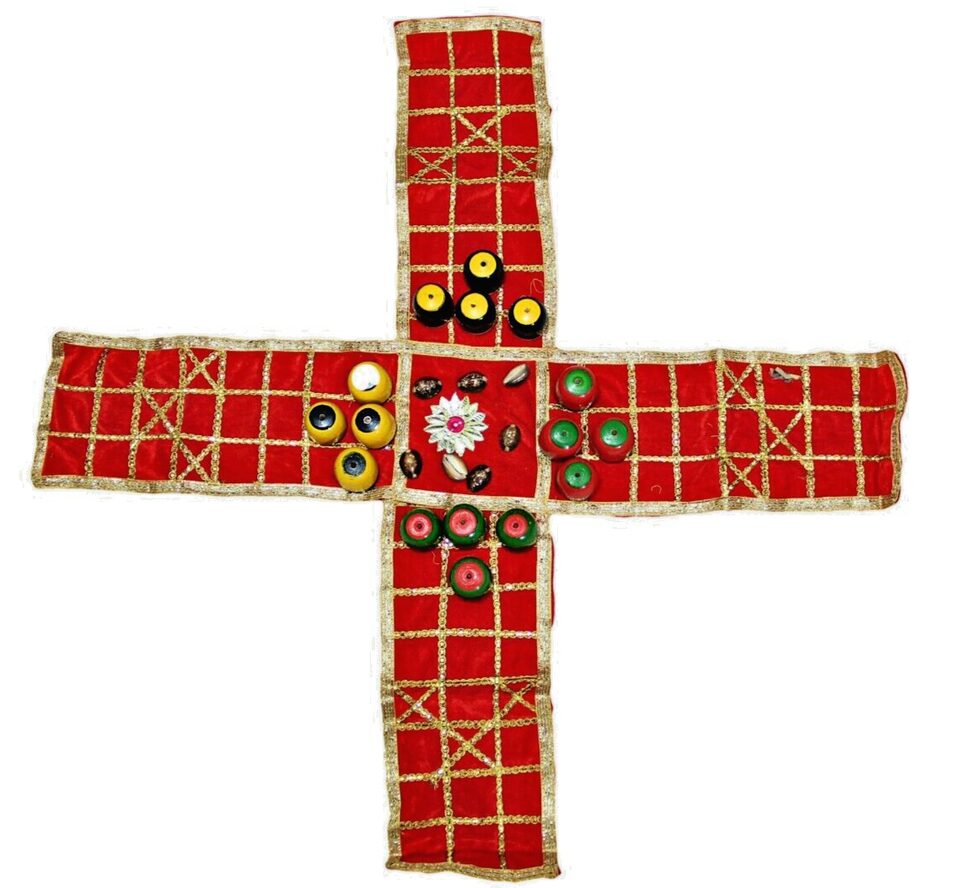Pachisi (400)
Chaupar, also known as chopad or chaupad, is a cross and circle board game played in Pakistan and Ancient India. The game is very similar to Pachisi and has been played for over two millennia. The board is made of wool or cloth, with wooden pawns and seven cowry shells used to determine each player’s move.
History and Cultural Significance
Chaupar is popular and significant due to its rich history and cultural significance in India. The game has been played by kings and commoners alike, and its popularity has persisted over time. It is believed that Chaupar was played in the epic poem Mahabharata, and it has been found in archaeological remains from the Iron Age and Painted Grey Ware period. The game reached its peak during the Mughal period, with the Mughal Emperor Akbar being a known enthusiast.
Gameplay Mechanics
The game is played by four players on a cross-shaped board, each player having four pieces. The pieces start at fixed positions around the board and race around it to finish at the center. The game involves strategy and skill, as players move their pieces according to the numbers on three four-sided dice.
In conclusion, Chaupar is a popular and significant board game with a rich history and cultural background. Its popularity has persisted over time, and it continues to be played in various parts of the world.
We are supported by our audience. When you purchase through links on our site, we may earn an affiliate commission, at no extra cost for you. Learn more.

